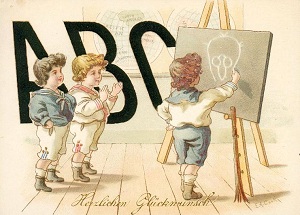Call me academically “tapped in”, but ever since starting both “Design Rhetorics” (New Media Studies 508) and “Text and Image” (New Media Studies 504) last week, I cannot stop noticing how connected written text and visual images are.
Think about it. Nowadays almost all text–printed books (from picture books, to encyclopedias, to autobiographies and even some novels), magazines (fashion, technological, fitness, the list goes on and on), online publications (journals, newspapers, blogs) social media posts (FB and Twitter), etc.–include some sort of images. And if the specific written work does not, you want it to. How many times have you read even the most descriptive of pieces and wished you could just see what the author was talking about?
Likewise it is rare for images to stand alone, without text, even when dealing with image-centered media. Take Pinterest and Instagram for example. The main point of each application is to store and share images with one another. However, it is the case more often than not that posted images also include written captions.
Obviously text without image can still be extremely powerful. And the same goes for image without text. But the two in combination can answer an otherwise untapped slew of questions; why was this specific image chosen above the rest and what specifically within the image is important to pay attention to, as two examples. These can be applied to either text heavy pieces using images or those concentrated on images with less text.
I know I have just started to learn about the correlation between the two, but I have already begun to notice the glaring trend between written subject and visual aid. I may be a writer but as the saying goes, a picture could be worth a thousand words.
Discover more from UCWbLing
Subscribe to get the latest posts sent to your email.

